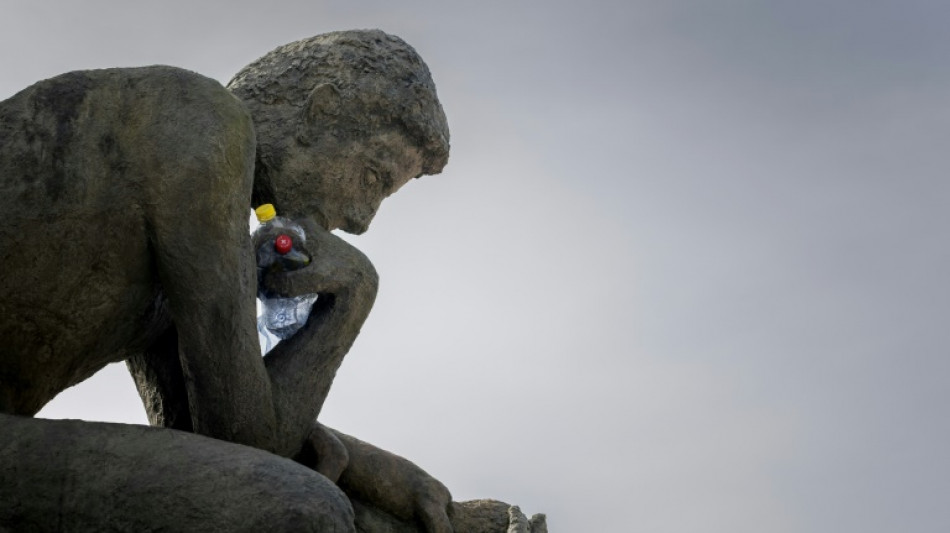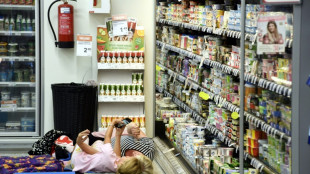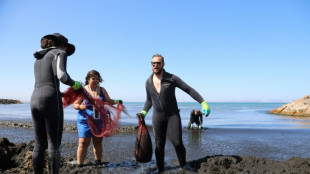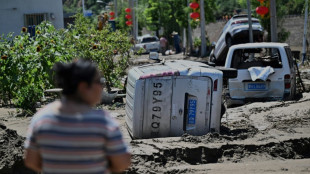
| RBGPF | 0.08% | 75 | $ | |
| CMSC | 0.82% | 23.06 | $ | |
| RYCEF | 1.66% | 14.44 | $ | |
| NGG | 1.03% | 72.57 | $ | |
| SCS | 39.75% | 16.895 | $ | |
| SCU | 0% | 12.72 | $ | |
| BCC | -1.41% | 82.19 | $ | |
| RIO | 0.3% | 59.83 | $ | |
| GSK | -0.07% | 37.535 | $ | |
| RELX | 0.27% | 51.73 | $ | |
| CMSD | 1.07% | 23.602 | $ | |
| VOD | 0.45% | 11.01 | $ | |
| JRI | 0.69% | 13.191 | $ | |
| AZN | 0.36% | 74.22 | $ | |
| BCE | -0.9% | 23.36 | $ | |
| BTI | 1.97% | 55.445 | $ | |
| BP | 1.76% | 32.32 | $ |

A 'Thinker' drowns in plastic garbage as UN treaty talks open
A replica of Auguste Rodin's famous sculpture "The Thinker" outside the United Nations headquarters was being slowly submerged in plastic rubbish Monday as countries gathered in a bid to finalise a global treaty on plastic pollution.
The sculpture will slowly disappear under layer upon layer of bottles, toys, fishing nets and other garbage during the 10 days of talks starting Tuesday, aimed at sealing the first international accord to tackle plastic pollution.
Six metres (20 feet) tall, the artwork, entitled "The Thinker's Burden", is being constructed by the Canadian artist and activist Benjamin Von Wong.
He hopes it will strike a chord with diplomats from the UN's 193 members and make them think about "the health impacts of plastic pollution: not just on our generation, but on all future generations", Von Wong told AFP.
Sitting on a representation of Mother Earth, this "Thinker" holds crushed plastic bottles in one hand and looks down at a baby held in the other.
"Over the course of the next 10 days, we're going to be slowly adding more and more plastic to this art installation to show the growing cost that is being passed on to future generations," Von Wong said.
"If you want to protect health, then we need to think about the toxic chemicals that are entering our environment," he said.
"We need to think about limits on plastic production. We need to think about a strong, ambitious plastics treaty."
Well over 400 million tonnes of plastic are produced globally each year, half of which is for single-use items.
While 15 percent of plastic waste is collected for recycling, only nine percent is actually recycled.
Nearly half, 46 percent, ends up dumped in landfills, while 17 percent is incinerated and 22 percent is mismanaged and becomes litter.
In 2022, countries agreed to find a way to address the crisis by the end of 2024, but a fifth round of talks in December last year in Busan, South Korea, failed to overcome fundamental differences.
Plastics break down into bits so small that not only do they find their way throughout the ecosystem but into human blood and organs, recent studies show, with largely unknown consequences.
S.Schwarz--BP



